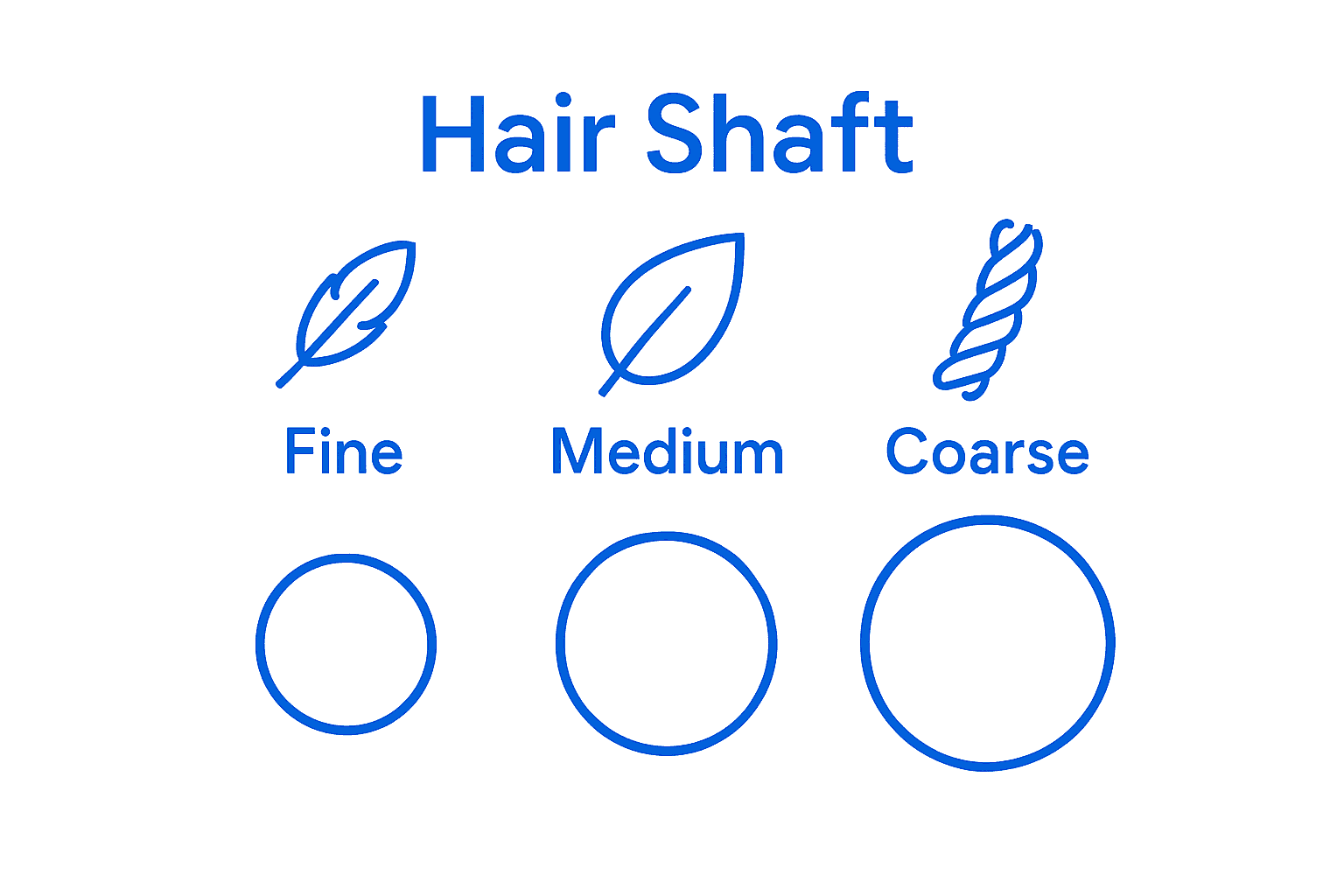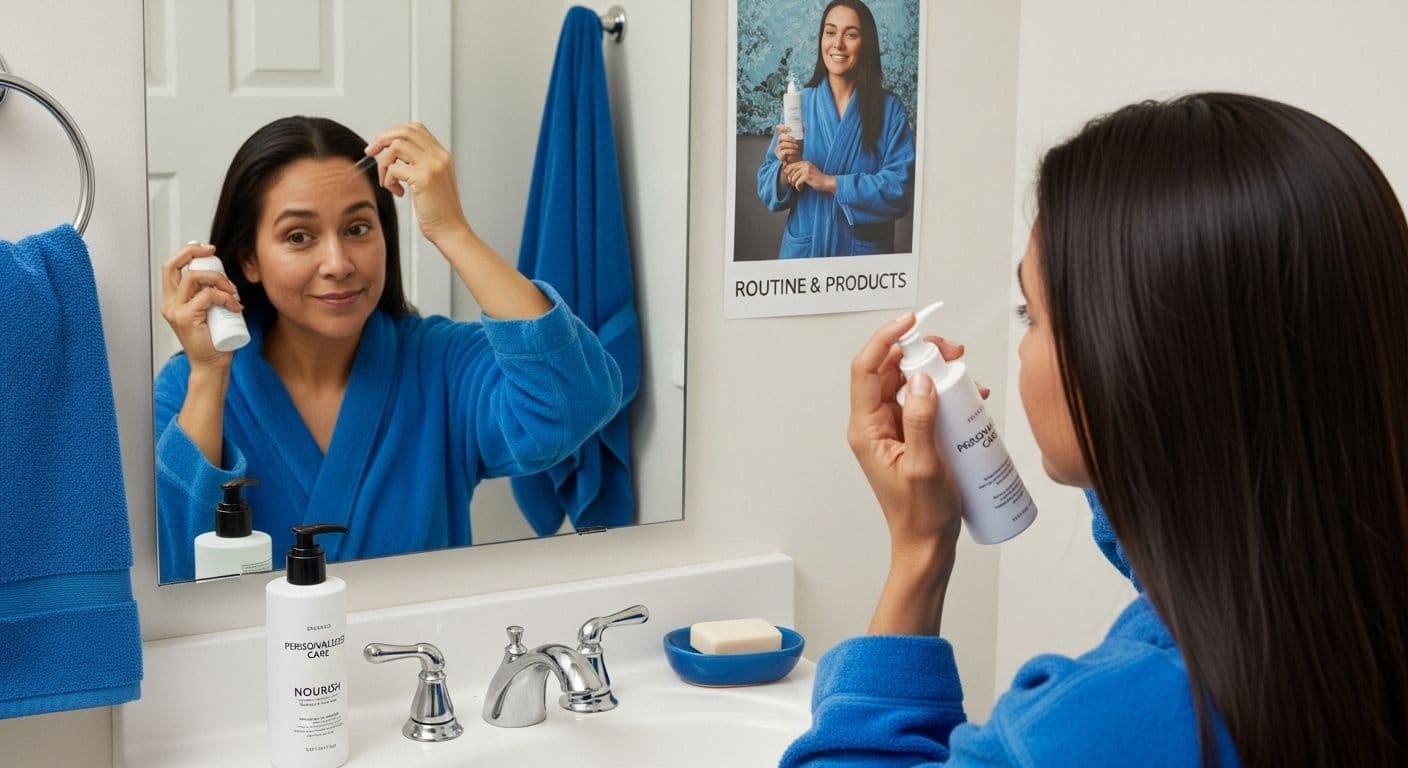Blog
Learning Materials
Understanding Fine Hair Care: Science and Solutions
Updated: August 28, 2025

Fine hair often gets labeled as fragile or tough to manage, but science tells a different story. Turns out, the individual strands are so slender they typically measure less than 60 micrometers across. That sounds delicate and limiting. Actually though, that unique structure unlocks styling and care opportunities you will not find with thicker hair types.
Table of Contents
- What Is Fine Hair And How Does It Differ From Other Hair Types?
- Why Fine Hair Care Matters: Exploring Its Unique Needs
- The Science Behind Fine Hair: Structure And Growth Patterns
- Personalized Solutions For Fine Hair: Balancing Routine And Products
- Real-World Impacts Of Effective Fine Hair Care: Success Stories And Tips
Quick Summary
| Takeaway | Explanation |
|---|---|
| Fine hair is delicate and thin. | Its narrow hair shaft makes it susceptible to damage, requiring specialized care. |
| Nutritional health affects fine hair. | A balanced diet is essential, as deficiencies can compromise hair strength and moisture retention. |
| Targeted products enhance fine hair’s health. | Lightweight and protein-focused products protect fine hair without weighing it down. |
| Personalized care routines are vital. | Individual hair characteristics necessitate tailored care strategies to promote optimal health and resilience. |
| Fine hair requires gentle styling techniques. | Using gentle methods protects fine hair from breakage and maintains its integrity during styling. |
What is Fine Hair and How Does it Differ from Other Hair Types?
Fine hair represents a unique hair type characterized by its delicate, thin structure and specific physical properties that distinguish it from medium and coarse hair textures. Unlike other hair types, fine hair has a smaller diameter and often appears more transparent when held against light, making it distinctly different in appearance and behavior.
To clarify the differences between fine, medium, and coarse hair types discussed in the article, the following table compares their defining characteristics.
| Hair Type | Typical Diameter | Cuticle Layers | Protein Density | Key Vulnerabilities |
|---|---|---|---|---|
| Fine | Less than 60 micrometers | Fewer | Lower | Breakage, moisture loss, damage |
| Medium | 60-80 micrometers (approximate) | Moderate | Average | Some damage, manageable care |
| Coarse | Greater than 80 micrometers | More | Higher | Dryness, heaviness, frizz |
The Structural Characteristics of Fine Hair
The primary defining feature of fine hair is its narrow hair shaft, which typically measures less than 60 micrometers in diameter. According to Yale University's Hair Science Research, this thin structure means fine hair lacks the central medulla layer found in thicker hair types, contributing to its lightweight and delicate nature.
Key structural differences include:

- Smaller hair follicle size
- Reduced number of cuticle layers
- Minimal protein density within the hair shaft
- Higher susceptibility to damage and breakage
Genetic and Physiological Factors
Hair texture is not merely a cosmetic characteristic but a complex genetic trait influenced by multiple factors. Genetic research reveals that specific genes like EDAR and FGFR2 play crucial roles in determining hair thickness and texture across different populations.
While fine hair might seem disadvantageous, it offers unique styling possibilities. Its lightweight nature allows for easier volume manipulation and quicker styling processes. However, individuals with fine hair often face challenges related to maintaining volume, preventing breakage, and managing overall hair health.
Understanding your hair's specific characteristics helps in developing targeted care strategies that address its unique requirements, ensuring optimal hair health and appearance.
This table organizes the main structural and physiological factors that affect fine hair health as described in the article.
| Factor | Description |
|---|---|
| Follicle Size | Smaller hair follicles produce narrower hair strands |
| Cuticle Layers | Fine hair has fewer protective cuticle layers |
| Protein Density | Lower protein content makes hair more susceptible to damage |
| Nutritional Status | Deficiencies impact hair strength and moisture retention |
| Genetic Influences | Genes like EDAR and FGFR2 determine hair thickness and texture |
| Environmental Stressors | More easily damaged by heat, chemicals, and external conditions |
Why Fine Hair Care Matters: Exploring Its Unique Needs
Fine hair requires specialized care strategies due to its inherent vulnerability and distinctive structural composition. Unlike thicker hair types, fine hair demands a nuanced approach to maintenance that addresses its specific physiological challenges and potential limitations.
Nutritional and Structural Vulnerabilities
The delicate nature of fine hair makes it significantly more susceptible to damage and environmental stressors. Nutritional research indicates that hair health is deeply connected to nutritional status, with deficiencies potentially compromising hair structure and viability.
Key vulnerabilities of fine hair include:
- Increased fragility and breakage risk
- Lower protein density within hair strands
- Reduced ability to retain moisture
- Higher sensitivity to chemical treatments
Holistic Hair Health Strategies
Addressing fine hair requires a comprehensive approach that goes beyond traditional hair care methods. While the hair appears delicate, strategic interventions can significantly improve its resilience and appearance. Learn more about protecting fragile hair strands.
Proper fine hair care involves understanding its unique characteristics and implementing targeted treatments that enhance strength without overwhelming the hair's natural structure. This means selecting lightweight products, minimizing heat exposure, and adopting gentle styling techniques that preserve hair integrity.
Ultimately, recognizing fine hair as a distinct hair type with specific needs allows individuals to develop personalized care routines that promote healthier, more vibrant hair growth and maintenance.
The Science Behind Fine Hair: Structure and Growth Patterns
Fine hair represents a complex biological system with intricate growth mechanisms and structural nuances that significantly influence its overall health and appearance. Understanding the scientific principles governing fine hair requires examining its fundamental biological processes and physiological characteristics.
Hair Follicle Dynamics
Research from the National Institutes of Health reveals that hair growth is a sophisticated process regulated by multiple physiological systems, including vascular, endocrine, and neural stimuli. Fine hair exhibits unique growth patterns characterized by specific cellular behaviors and regenerative capacities.
Key characteristics of fine hair growth include:
- Shorter active growth phase (anagen)
- Reduced follicle diameter
- Decreased protein production
- More frequent hair replacement cycles
Age Related Transformations
As individuals age, fine hair undergoes remarkable structural modifications. Learn more about hair follicle growth stages to understand these intricate changes. Cellular transformations within hair follicles result in progressive modifications of keratin expression and protein structures, ultimately affecting hair thickness and resilience.
Genetic and environmental factors collaborate to influence hair follicle stem cells, determining the trajectory of hair development. The intricate interplay between genetic predisposition and external influences creates a complex landscape of hair growth and transformation.
Comprehending these scientific principles empowers individuals to develop targeted strategies for maintaining and enhancing fine hair health, recognizing that each strand represents a dynamic biological entity with its own unique characteristics and potential.
Personalized Solutions for Fine Hair: Balancing Routine and Products
Personalized hair care represents a sophisticated approach to managing fine hair, recognizing that each individual's hair requires a unique strategy tailored to its specific characteristics, environmental exposures, and genetic predispositions.
Nutritional and Product Considerations
Harvard Health research emphasizes the critical role of nutrition and targeted product selection in maintaining fine hair health. Understanding the intricate balance between dietary intake and external hair care interventions becomes paramount for individuals seeking optimal hair vitality.
Key elements of a personalized fine hair care strategy include:
- Identifying individual hair porosity
- Selecting lightweight, protein-balanced products
- Understanding scalp microbiome dynamics
- Matching product weight to hair strand thickness
Holistic Hair Care Approach
Explore our comprehensive hair routine guide to develop a nuanced understanding of fine hair maintenance. A holistic approach transcends simple product application, integrating lifestyle factors, nutritional support, and precise styling techniques that respect the delicate nature of fine hair.
Successful fine hair care demands a multifaceted strategy that considers genetic predispositions, environmental stressors, and individual physiological responses. By embracing a personalized approach, individuals can develop a hair care routine that not only protects but actively enhances the natural characteristics of their fine hair, promoting resilience and visual appeal.

Real-World Impacts of Effective Fine Hair Care: Success Stories and Tips
Fine hair care transcends mere aesthetic considerations, representing a profound journey of personal transformation and self-confidence. The real-world impacts of understanding and implementing targeted hair care strategies can dramatically reshape an individual's perception of their hair and overall appearance.
Psychological and Emotional Dimensions
Research from the University of Virginia reveals that hair health is intrinsically linked to psychological well-being. Individuals who successfully manage their fine hair often experience enhanced self-esteem and a more positive body image, demonstrating the profound connection between hair care and personal confidence.
Significant psychological benefits include:
- Increased self-assurance in professional settings
- Reduced anxiety about hair appearance
- Enhanced personal presentation
- Greater emotional resilience
Practical Transformation Strategies
Discover advanced hair strengthening techniques that can revolutionize fine hair management. Successful fine hair care involves understanding individual hair characteristics and implementing precise, targeted interventions that respect the hair's delicate structure.
Effective fine hair care is not about drastic transformations but subtle, consistent improvements. By adopting a holistic approach that combines nutritional support, gentle styling techniques, and scientifically formulated products, individuals can unlock their hair's inherent potential, transforming perceived limitations into unique strengths.
Unlock the Science of Fine Hair Care with Personalized AI Solutions
Are you tired of fine hair that feels fragile, lacks volume, or never seems to respond to off-the-shelf products? The article explains how fine hair has unique needs based on structure, genetics, and vulnerability to damage. Standard routines rarely address these pain points, leaving you frustrated and lacking confidence in your hair’s appearance.

Now imagine leveraging advanced AI to create a custom hair care plan designed for your fine strands. With MyHair.ai, you gain access to expert analysis that goes beyond one-size-fits-all advice. Upload a simple scan and receive instant, science-backed recommendations tailored to your hair’s structure, porosity, and growth patterns. Want guidance on choosing lightweight products or learning protective techniques? Our healthy hair routine guide breaks it all down for you. Still facing breakage or thinning? Find real answers in our tips for stopping hair breakage, all powered by your personal hair data.
Take control of your hair journey today. Visit MyHair.ai to experience personalized care, see proven results, and start building healthier, stronger fine hair with confidence.
Frequently Asked Questions
What is fine hair, and how does it differ from other hair types?
Fine hair is characterized by its thin structure and smaller hair shaft diameter, typically measuring less than 60 micrometers. It differs from medium and coarse hair textures in terms of diameter, cuticle layers, and vulnerability to damage.
What are some common care strategies for fine hair?
Care strategies for fine hair include using lightweight, protein-balanced products, minimizing heat exposure, and adopting gentle styling techniques that preserve hair integrity, as well as focusing on nutritional support for hair health.
How does nutrition affect the health of fine hair?
Nutrition plays a crucial role in fine hair health, as deficiencies can compromise its structure and viability. Ensuring adequate protein, vitamins, and minerals can enhance fine hair's strength and overall appearance.
What should I consider when choosing products for fine hair?
When choosing products for fine hair, consider your hair's porosity, select lightweight formulations that won't weigh down your strands, and look for ingredients that strengthen hair without overwhelming its delicate structure.